From the annals of history, a “lancer” is a cavalryman on horseback who is armed with a giant spear known as a lance. Think of them as the fast-moving attack force that often could change the tide of a battle. It’s a little curious that Swiss Army named a series of watches with dive bezels after these mounted fighters of yesteryear.
However, there are precedents for them using soldierly names like this. Victorinox Swiss Army had a tradition of naming their earlier watches after military personnel such as Cavalry, Centinel, Centurion, Convoy, Crusader, Ground Force, Infantry, Lancer, Officer, and Raider among others. Later military names would invoke aviation themes like Airboss, Alpnach, Hunter, and SeaPlane. I suppose that these kinds of descriptors make sense for a company that has “Army” in its name.
Remembering the (almost forgotten) Swiss Army Lancer 100 from the 1990s
This article will be a general overview of Swiss Army Lancer 100 watches, which can be spotted by their colorful dive bezels and geometric bracelets. Make sure to check out the related article Victorinox Swiss Army Lancer 200 – “Home Plate” Bezel.
Finding concrete information about the Victorinox Swiss Army Lancer 100 family of watches was not easy. These are early Swiss Army models sold in a time when the Internet did not exist as it does today. The only information that I found came from old print advertisements, ancient websites and the occasional eBay auction where the seller showed an old package. Vintage watch boxes and tags often reveal lost details about these watches such as the model number and exact name.
Swiss Army Lancer 100 watches were generally NOT on my search radar as I hunted bigger, more expensive and prestigious Victorinox Swiss Army watches. It’s kind of funny how one can come full circle and arrive back to where one began. When I first started collecting watches, they were mostly quartz models. These battery-powered watches represent the lowest cost of entry into the watch collecting hobby.
When I became “serious as a collector”, I felt that I had to push myself exclusively into buying mechanical watches with automatic or hand-wound movements. Only after I collected many mechanical watches did I feel like I wanted to revisit my interest in collecting vintage Swiss Army quartz watches. A “good watch” is a “good watch”, and I still get a thrill from hunting obscure quartz timepieces. The fact that they can often be bought at bargain prices is a bonus for those of us who want cheap thrills.
When I started writing this article I thought that the Swiss Army Lancer 100 represented Victorinox’s earliest attempt at a dive watch, but I have since modified that opinion because of old Swiss Army ads that I discovered. In the adverts, Swiss Army Lancer 100 and Lancer 200 watches are shown stacked on each other at the edge of the water. The headline reads “Built for land, sea, and air.” These ads did not specifically claim that the Lancers were dive watches. Instead, they implied generalized use in most environments.
During the early and mid-2000s when the Swiss Army Lancers were sold, it is debatable if Victorinox Swiss Army had dedicated pilot watches, field watches, and dive watches. The sub-groups would come later. Instead, the Lancer models could be “do anything” watches. If you say that they have to be dive watches because of the unidirectional bezels, then I can see your point. However, many pilot watches also have timing bezels and many diving watches never go underwater. These are known as desk divers. ha ha. I believe that the Swiss Army Lancers were considered sporty adventure watches with 100 or 200 meters of water resistance, depending on the model.
Flat Link Bracelet
One of the most distinctive elements of the Lancer 100 and Lancer 200 watches was the flat link bracelets reminiscent of geometric plate armor. I’ve never seen another watchband exactly like it. The links are thin, extremely flexible at the joints and have a little lateral “give”. The square edges of the links look sharp, but honestly, this watch wears comfortably. This might be because the watchband tapers from 21 mm at the lugs to a very comfortable 18 mm at the locking-clasp. The deployant clasp is a standard stamped part and about what you would expect for this time period, in this price bracket. It has a locking mechanism, a diver’s extension, and micro-adjustments that can be modified with a toothpick. Just head to your local diner to borrow one.
The metal bracelet gave the style and strength in equal measures. These model-specific watchbands were made to fit these watches only. I know this because I bought a Lancer 100 without a watchband and was surprised to discover that even a thin NATO strap would not fit in the space between the spring bar and watch case. This means you cannot easily use an aftermarket watch band.
A Great Size for Most Wrists
Lancer 100s are simple, attractive watches that are easy to wear for a wide range of wrist sizes. Back in the 1990s, “smaller” watches were still in fashion so you have to adjust your expectations when discussing them. For instance, the large Lancer 100 measured 39 mm wide. It might sound funny to our modern ears to hear this dimension described as large. The mid-size Lancer 100 measured only 32 mm wide. Many would consider that size to be feminine, but let’s just say it’s for people with smaller wrists.
Wearing the 39 mm Swiss Army Lancer 100 was a new experience for someone like me who is used to larger and heavier watches. The Lancer 100 only weighs 124 grams and I had to keep checking under my sleeve to make sure that it had not fallen off. Some of my larger watches feel bloated and chunky by comparison. I’m not saying that there isn’t a time and place for those watches. It’s just when it comes to comfort, a lighter watch will give less wrist fatigue. Anybody who feels like their wrist gets abused by his/her heavy watch knows what I am talking about.
Straight-Forward Design
The design of the Lancer 100 watches is pure vintage Swiss Army, and has the clean dial layout that we’ve come to expect. Bold numerals and lumed pip indices are standard fare. A secondary 24-hour scale can be seen inward of the larger numerals. An applied Swiss Army shield appears at 12:00, which became an early standard feature. The Lancer 100‘s are old enough to have just the words “SWISS ARMY” on the dial. Later after 2004 (or so), “Victorinox” was added to the dials and branding. I prefer the compact nature of the old logo because the words are barely wider than the shield. The inside of the case is highly polished and sometimes reflects the dial in a funhouse mirror distortion. You can see double dot indices in the image below.
Other features include a date window located at the 3:00 position. This arrangement is usually less controversial than putting the date at 4:30, but many watch purists would rather have dials without a date window at all “for better symmetry”. The stick hands are well-proportioned and the second’s hand is a bright yellow needle. Notice that minty green lume and the word T SWISS MADE T on the dial? That is tritium paint. This slightly radioactive lume used to glow a little brighter when it was new but fades over time. There is heavy knurling on the crown and bezel edges for easy gripping.
Swiss Army Lancer 100 watches came in 4 dial colors including black, blue, red and green. They were produced in the large 32 mm dimension and the mid-size 32 mm dimension so Swiss Army had styles for men, women and young adults. All the bases were covered here. Swiss Army also employed a popular technique back then for its cases involving steel and gold tone. Explore all of the Lancer models in the Victorinox Swiss Army Watch Identifier.
Two-Tone Fun
Currently, there is a minor trend in watches that have so-called two-tone metal to make watch cases and bracelets. This usually means having both stainless steel and some variation of gold used in the watch design. Many Lancer 100 watches had yellowish-gold-colored links in the bracelet. Obviously, this was probably not real gold, but the effect was the same back then as it was today. It is eye-catching and unusual. Personally, I like two-tone watches, but they are not for everyone.
The color and size variations were similar to the stainless steel-only models, but the gold-colored metal was used for the bracelet center links, the crown, the bezel and its numbers, the dial printing and the date wheel printing. Even the hands were a golden hue and it completely changes the bling factor of the watch. I think this red one looks snazzy and could be a cheap placeholder in my collection for the unobtainable Jubilee Edition Infantry Vintage Chrono.
Conclusion
Many people will see the Swiss Army Lancer 100 as just a basic quartz watch, and they would not necessarily be wrong. However, interesting bracelets and an array of colors make them fun to collect. You can pick the stainless steel versions, or you can go full-retro with the two-tone bracelet. Two choices of comfortable sizes mean that practically anyone can wear one. They are affordable and well made. In fact, they might be a good companion for “land, sea, and air”… just like the advertisement claimed.


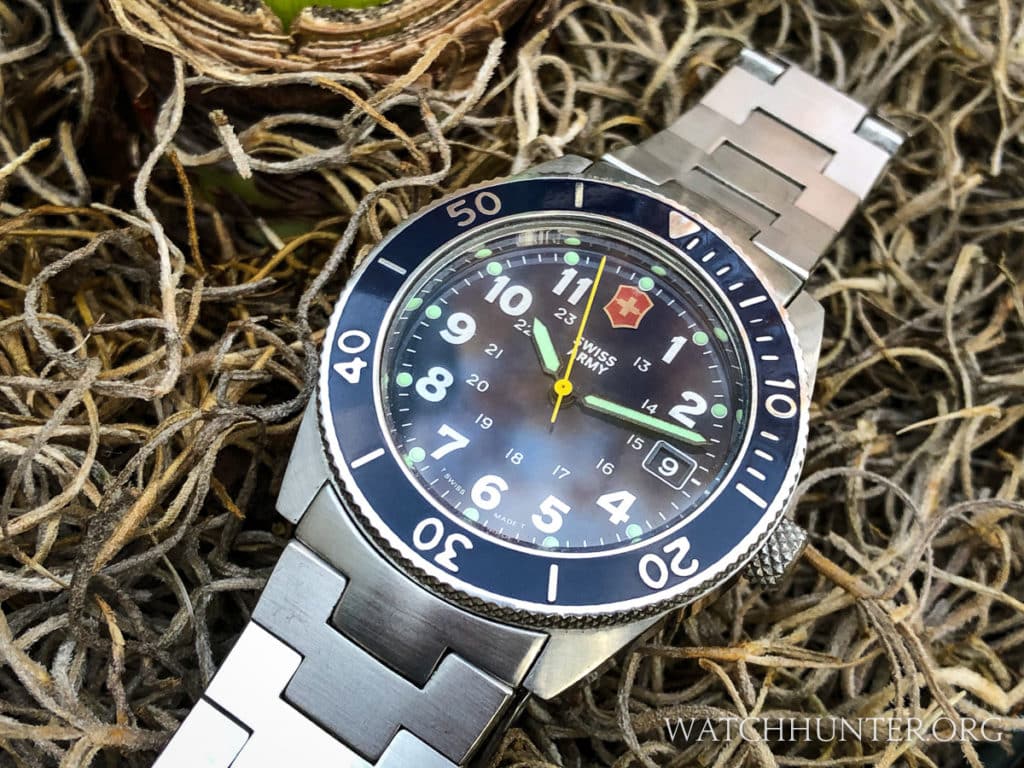

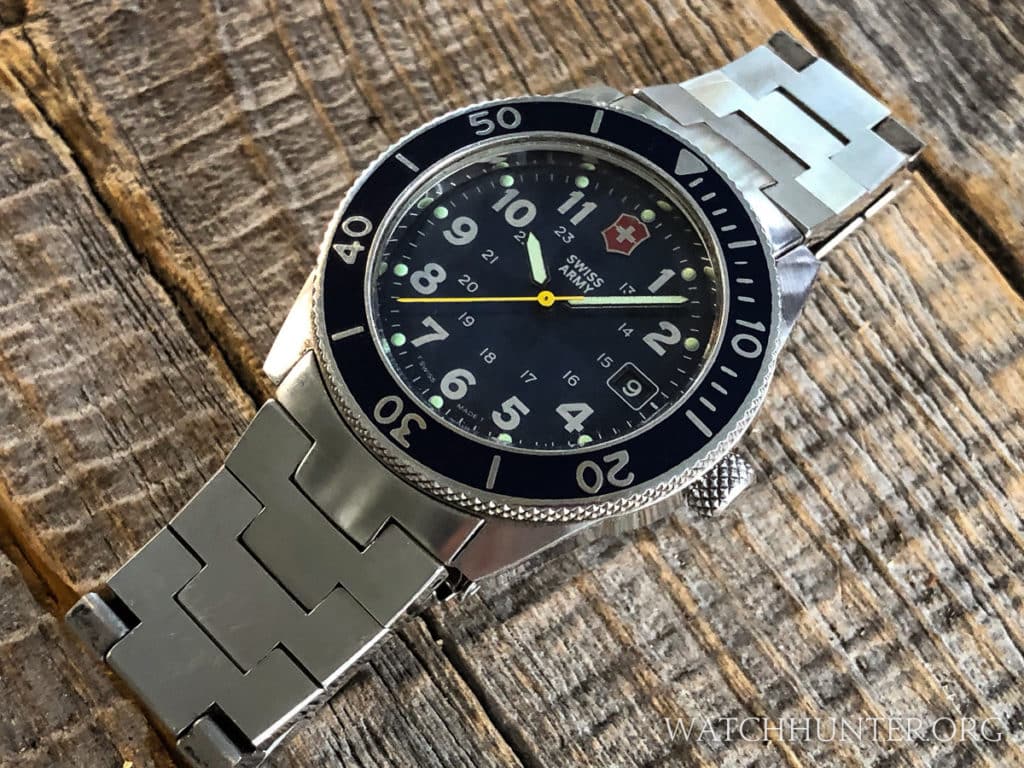
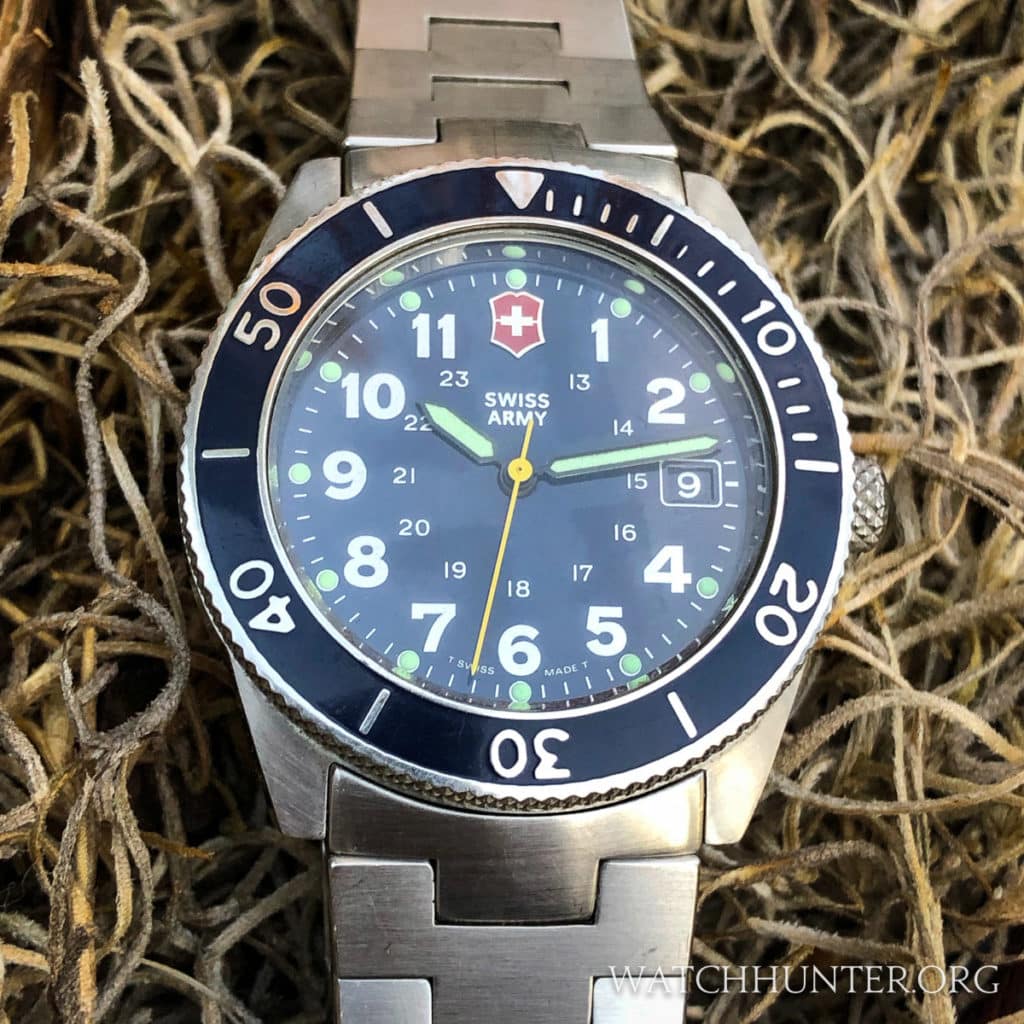
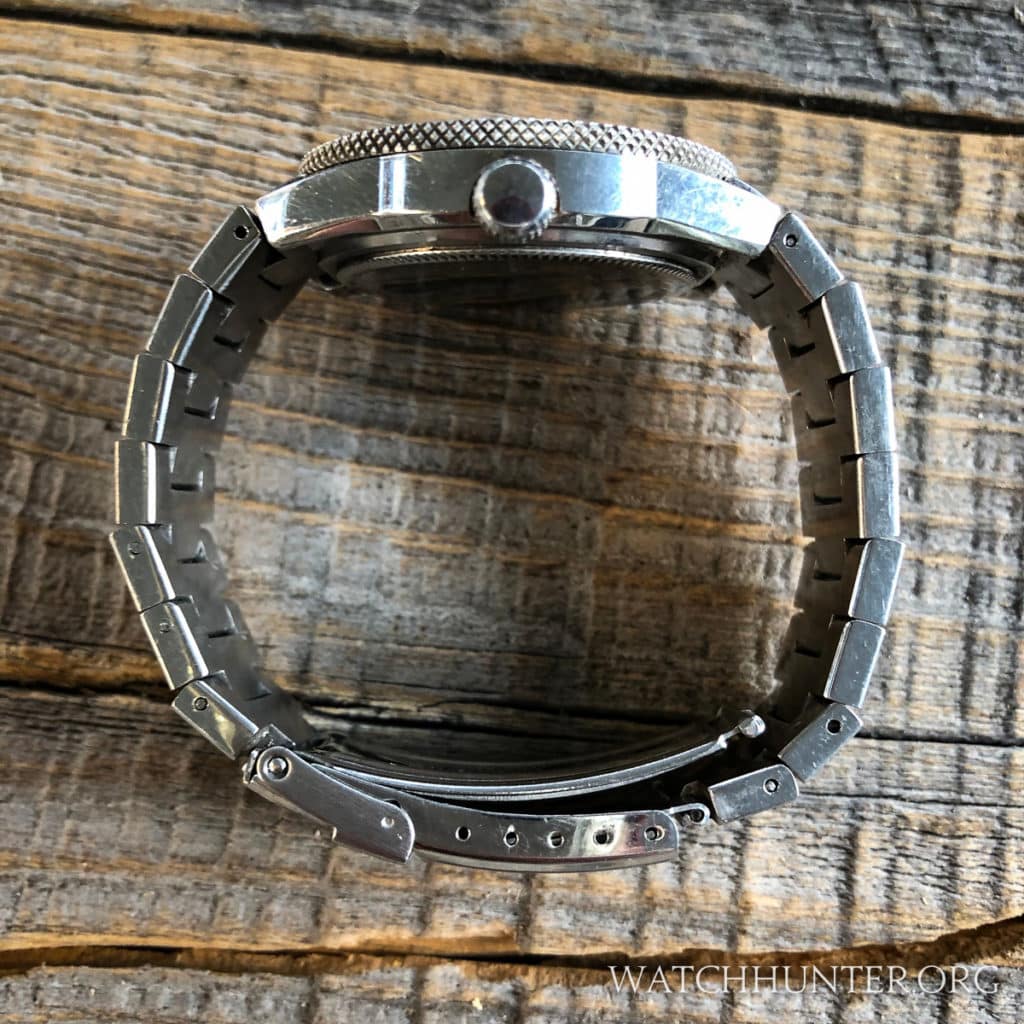
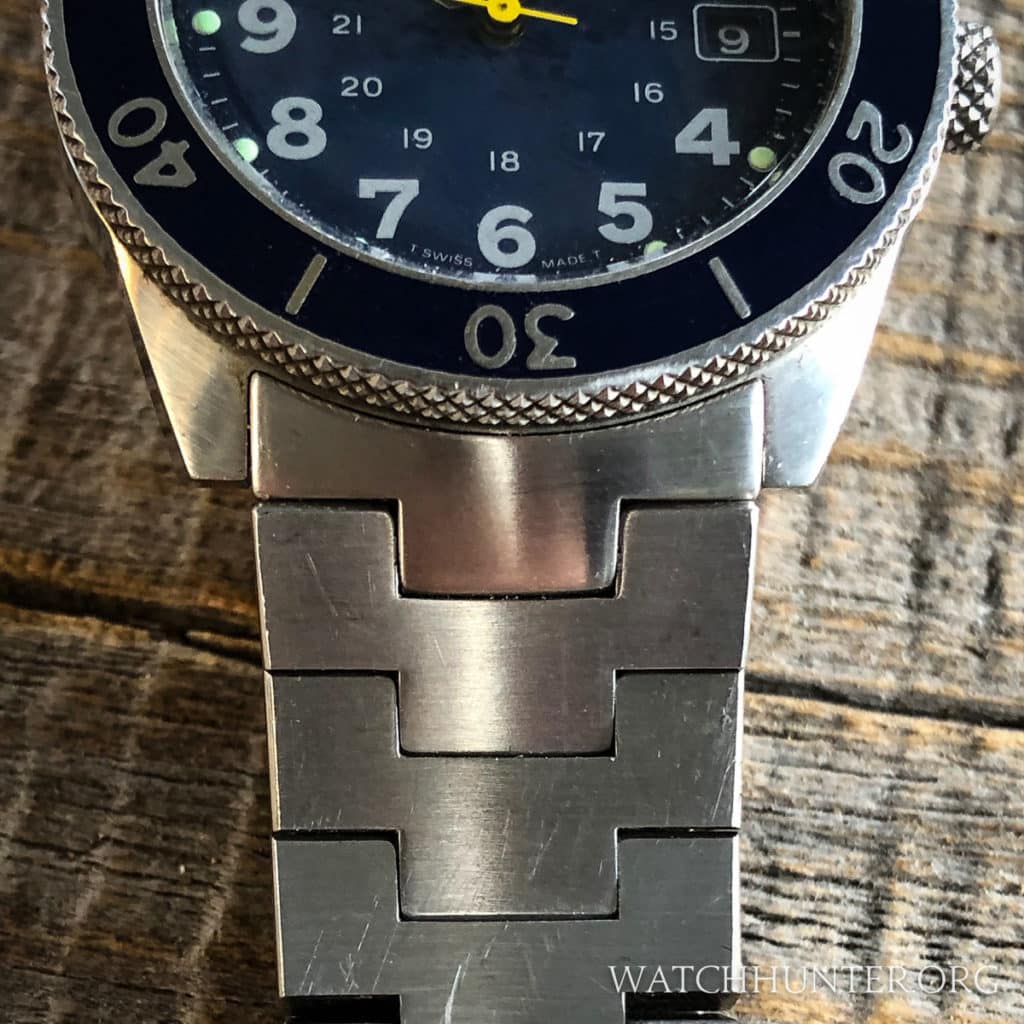
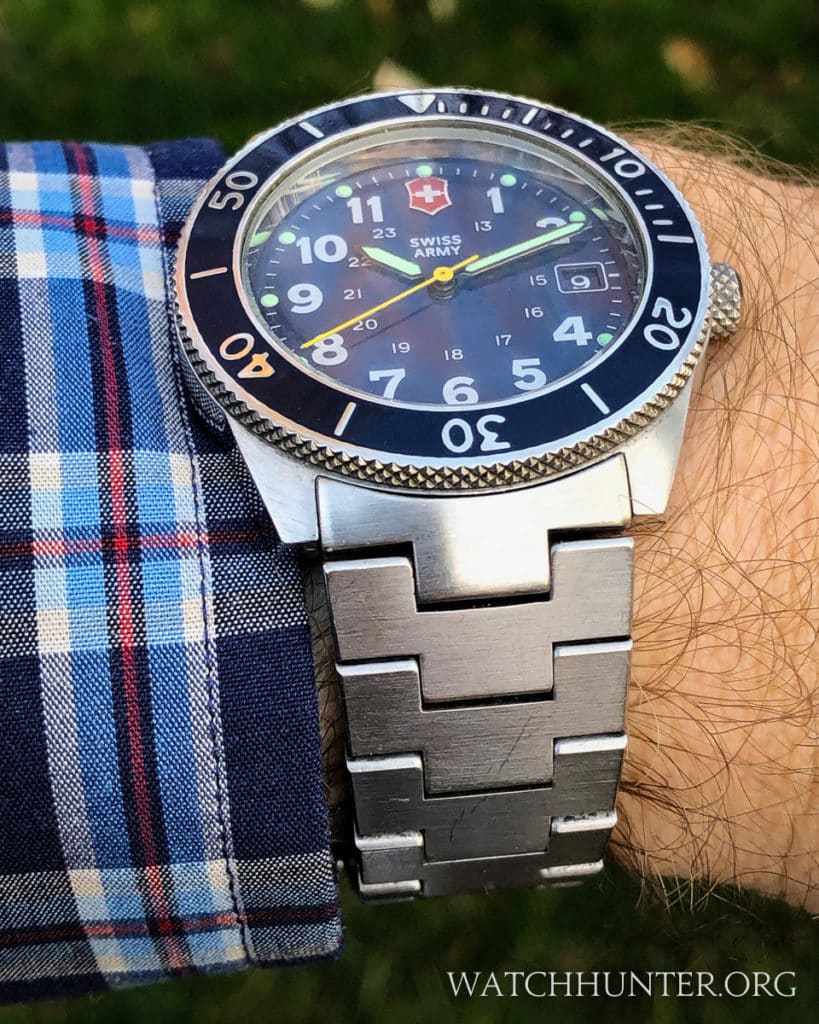
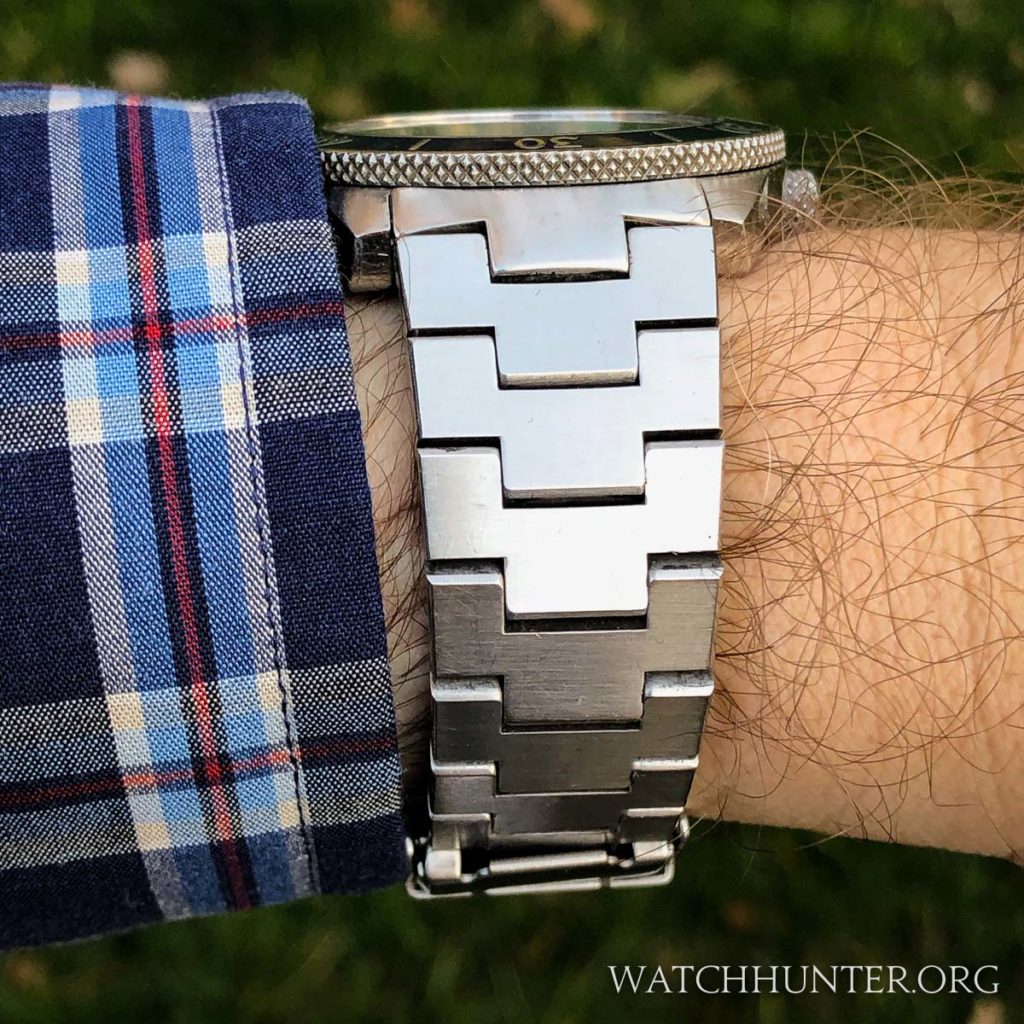
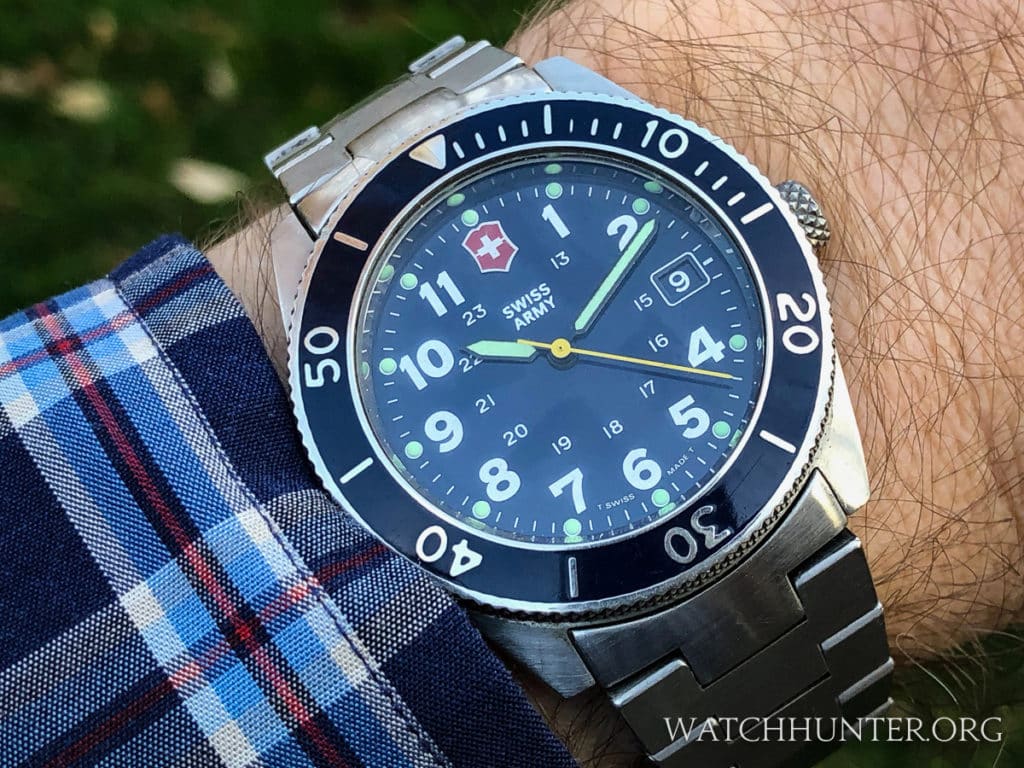
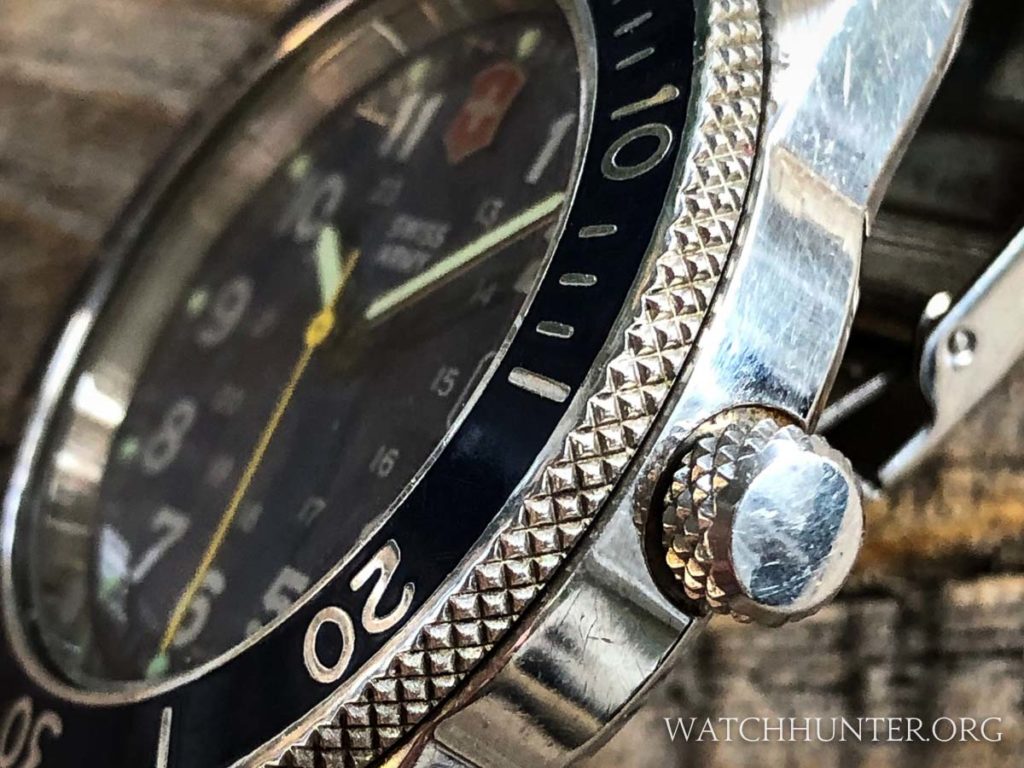
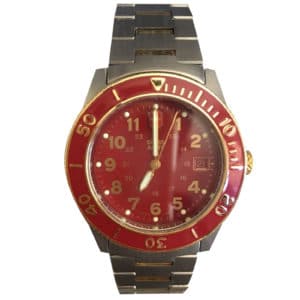
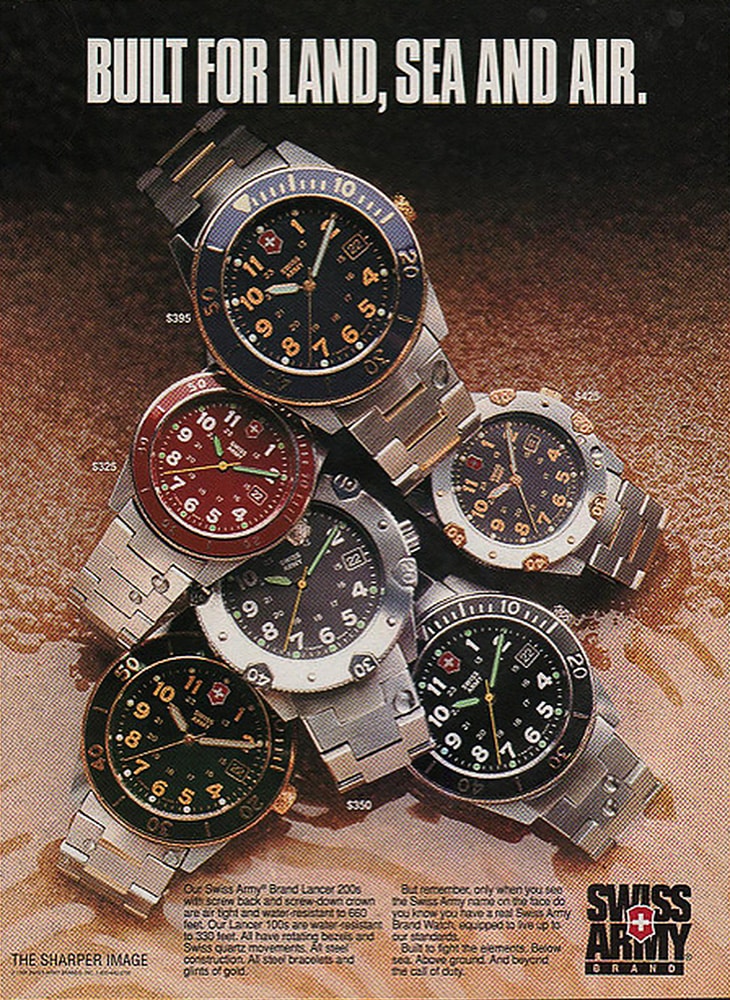


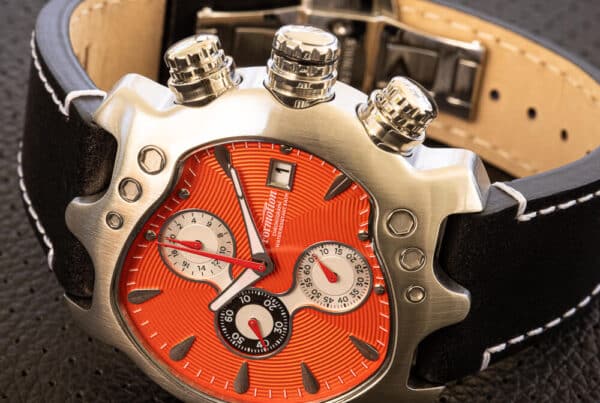
Great review of a forgotten watch! I love the knurled bezel on these. Thanks for putting this thoughtful article together for VSA fans, Andrew.
Myron